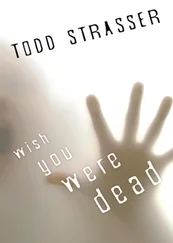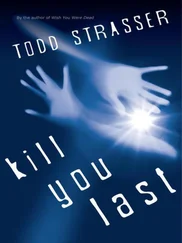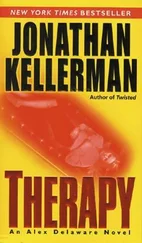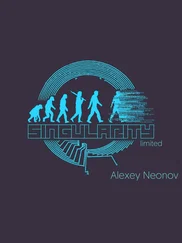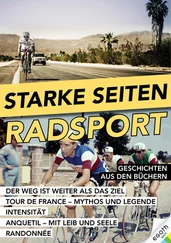Alison Strasser - Time-Limited Existential Therapy
Здесь есть возможность читать онлайн «Alison Strasser - Time-Limited Existential Therapy» — ознакомительный отрывок электронной книги совершенно бесплатно, а после прочтения отрывка купить полную версию. В некоторых случаях можно слушать аудио, скачать через торрент в формате fb2 и присутствует краткое содержание. Жанр: unrecognised, на английском языке. Описание произведения, (предисловие) а так же отзывы посетителей доступны на портале библиотеки ЛибКат.
- Название:Time-Limited Existential Therapy
- Автор:
- Жанр:
- Год:неизвестен
- ISBN:нет данных
- Рейтинг книги:3 / 5. Голосов: 1
-
Избранное:Добавить в избранное
- Отзывы:
-
Ваша оценка:
- 60
- 1
- 2
- 3
- 4
- 5
Time-Limited Existential Therapy: краткое содержание, описание и аннотация
Предлагаем к чтению аннотацию, описание, краткое содержание или предисловие (зависит от того, что написал сам автор книги «Time-Limited Existential Therapy»). Если вы не нашли необходимую информацию о книге — напишите в комментариях, мы постараемся отыскать её.
Time-Limited Existential Therapy: The Wheel of Existence,
Time-Limited Existential Therapy: The Wheel of Existence
Time-Limited Existential Therapy — читать онлайн ознакомительный отрывок
Ниже представлен текст книги, разбитый по страницам. Система сохранения места последней прочитанной страницы, позволяет с удобством читать онлайн бесплатно книгу «Time-Limited Existential Therapy», без необходимости каждый раз заново искать на чём Вы остановились. Поставьте закладку, и сможете в любой момент перейти на страницу, на которой закончили чтение.
Интервал:
Закладка:
Discovering anxiety is to acknowledge life’s uncertainties and inconsistencies, revealing that anxiety is a sine qua non of existence. ‘We must all face inevitable death, groundlessness, isolation and meaninglessness’ (Yalom, 1980, p. 485). Therapy helps us to explore how we live with and respond to our anxiety. ( Chapter 8)
Revealing the relationship refers to the notion that we are always in relationship – a significant component of existential therapy. ( Chapter 9)
Exploring the four worlds is the recognition that we experience and live simultaneously in our physical, social, private and spiritual worlds, an experience which is integrated into our being‐in‐the‐world. ( Chapter 10)
Clarifying the worldview is the exploration of our personal principles and the process of gaining understanding about how our belief and value systems both serve and give us our freedom yet have the potential to become entrenched or ‘sedimented’, filtering and often limiting our worldview. ( Chapter 11)
Working with paradox and polarities acknowledges that everything has an opposite, which is often contradictory. Not everything is reconcilable, neither is it necessary to be so. This recognition opens us to an understanding that opposites can coexist and thus to a more comprehensive and complex both/and experience rather than the more common either/or position of splitting our experience into reality‐polarising opposites. ( Chapter 12)
Identifying choices and meaning is at the heart of existential philosophy, which contends that we are forever making choices in light of the meaning we ascribe to the situations in which we find ourselves. ( Chapter 13)
Integrating mind and body is a view that expresses how we experience life through our thinking and our emotions and simultaneously sense through our bodies. ( Chapter 14)
Understanding authenticity helps connect an individual to their story in a manner that reveals not only their personal world but also how they affect and influence others and the environment in which they exist ( Chapter 15)
Each of the individual segments within this central part of the wheel illustrates the principal themes that indicate our lived experience, our individual responses to the immutable, ontological givens described above; they will be explored in Section 2. The segments are both separate and flow into each other, framing the exploration that occurs with clients. As with all themes, they can be explored individually but are not seen in isolation as everything is connected to the whole of an individual’s experience.
There is always a flow, an interaction between the ontological and ontic where the ontic is our personal and individual response and our actions to ‘the concrete, changing and practical aspects of existence’ (van Deurzen & Adams, 2011, p. 154). Mortality, for example, is an existential given but each of us will respond differently to the idea of death, whether it be to live in eternal fear of its imminence, to live every day as if it were our last, to live in denial of death or to live with awareness of the inevitability of death and to manage the impact on us of this awareness.
Core of the Wheel: Time and Self
In this updated version of the Wheel of Existence, the segments revolve around time and the ever‐changing self at its centre.
Time as one of the tenets of existence refers to how we engage with or experience time and temporality within the dimensions of the past, present and future. Time is the way we relate to the hum of temporality and all of the other ontological givens.
Time itself is a social and personal construct that furnishes us comfortably with a convenient structure as we move from birth to death, from day through to night, from experience to experience, from moment to moment. Time is closely connected with endings of all types, evoking different reactions, and is worked with and addressed in therapy.
The Wheel of Existence figuratively demonstrates how time can be deemed as the centre of our existence. It informs every micro‐second of our waking and sleeping life and influences the way we understand our past, live in the present and imagine the future. Time both influences and interacts with all the elements that constitute the ‘expression of the sum total of our particular way of being with or engaging in the world’ (Strasser, 1999, p. 11).
Time also interacts with and influences our concept of our self. In existential terms, we are continually reacting to what is happening to and around us and we are constantly making moment‐to‐moment passive and active choices. The self continually shifts and flows between feeling worthy and secure and inferior, doubtful and insecure, as we find ourselves in relationship with the ontological givens and our ontic responses. The self is thus in constant flux.
Time and the self will be explored further in Chapter 2.
The Principle of Interconnectedness
The World and I are within each other.
Maurice Merleau‐Ponty, The Phenomenology of Perception (1962)
The dividing lines between the sections of the Wheel are blurred or intentionally indistinct to denote the interconnectedness of human concerns or ‘givens’, the overlap of our ontic reactions and the interplay of our ontic reactions with the ontological givens that underpin them. Both the universal existential givens and our individual responses to these universal givens are incorporated into the Wheel of Existence so as to signify the interplay between the two.
Husserl (1977) coined the term ‘intentionality’ from his questioning of the Cartesian mind/body and subject/object dichotomy. In opposition to Descartes’s maxim I think, therefore I am , Husserl developed a theory that refutes the separation of our thinking self from being and advocates that our thoughts, body, emotions, and our connection to the external world, our environment, are always in relationship with each other and woven into the fabric of our existence. He argued that we are constantly interpreting and consequently constructing meaning out of every situation, every thought, every interaction from our own unique standpoint. He suggested, furthermore, that our understanding of everything is experienced in our consciousness in its entirety and is inextricably joined to our perceptions of them.
Simply put, if I am conscious, I am always aware of something. When I become aware of my anger, for example, I might also notice that my anger is directed towards something or someone (Husserl, 1977). If we take this further, I might become aware that my anger is pulsing through my body and memories may begin to arise of situations where I might have felt similarly. Simultaneously, sadness, fear or other emotions might emerge where a possible link to some particular sense of uncertainty might be felt as I begin to reflect on my lack of control and feeling of unease.
This interconnectedness amongst all things in our experience includes the interrelationship between the two philosophies of existentialism and phenomenology and, as the Wheel demonstrates, the relationship between ontological givens, ontic reactions, time, and self – and, indeed, the therapist’s resonance with client’s subjective experience. All of these interconnections will be explored more fully in Section 2.
Application to Psychotherapy
Existential therapy is a process of truth finding. It aims to help people to disentangle their lives and generate clarity. It addresses all‐important issues directly and encourages a person to reconnect with a strong sense of personal direction. Careful attention is paid to both the universal and the particular aspects of a person’s existence in order to understand the relationships and tensions between them … People learn to live deliberately rather than by default.
Читать дальшеИнтервал:
Закладка:
Похожие книги на «Time-Limited Existential Therapy»
Представляем Вашему вниманию похожие книги на «Time-Limited Existential Therapy» списком для выбора. Мы отобрали схожую по названию и смыслу литературу в надежде предоставить читателям больше вариантов отыскать новые, интересные, ещё непрочитанные произведения.
Обсуждение, отзывы о книге «Time-Limited Existential Therapy» и просто собственные мнения читателей. Оставьте ваши комментарии, напишите, что Вы думаете о произведении, его смысле или главных героях. Укажите что конкретно понравилось, а что нет, и почему Вы так считаете.


